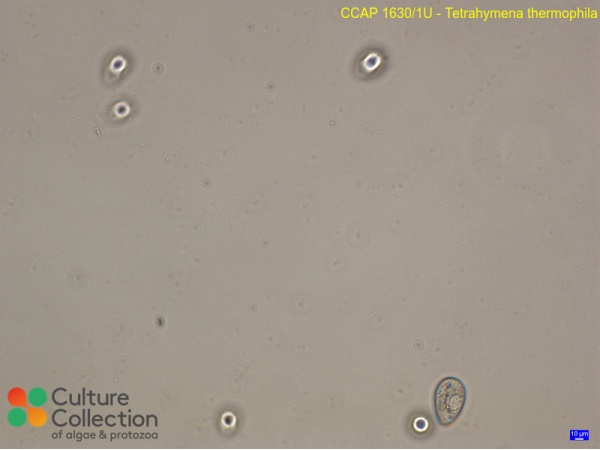References [ 16 ]
Kher CP, Doerder FP, Cooper J, Ikonomi P, Achilles-Day U, Küpper FC & Lynn DH (2010) Barcoding Tetrahymena: Discriminating species and identifying unknowns using the cytochrome c oxidase subunit I (cox-1) barcode. Protist 162: 2-13.
Ketola T, Laakso J, Kaitala V & Airaksinen S (2004) Evolution of HSP90 expression in Tetrahymena thermophila (Protozoa, Ciliata) populations exposed to thermally variable environments. Evolution 58: 741-748.
DOI: none
Friman VP & Buckling A (2013) Effects of predation on real-time host-parasite coevolutionary dynamics. Ecology Letters 16: 39-46.
Friman VP, Jousset A & Buckling A (2014) Rapid prey evolution can alter the structure of predator-prey communities. Journal of Evolutionary Biology 27: 374-380.
Pennekamp F, Mitchell KA, Chaine A & Schtickzelle N (2014) Dispersal propensity in Tetrahymena thermophila ciliates - a reaction norm perspective. Evolution 68: 2319-2330.
Friman VP, Ghoul M, Molin S, Johansen HK & Buckling A (2013) Pseudomonas aeruginosa adaptation to lungs of cystic fibrosis patients leads to lowered resistance to phage and protist enemies. PLoS ONE 8(9): e75380.
Zhang J, Ormala-Odegrip A, Mappes J & Laakso J (2014) Top-down effects of a lytic bacteriophage and protozoa on bacteria in aqueous and biofilm phases. Ecology and Evolution 4: 4444-4453.
Friman VP & Buckling A (2014) Phages can constrain protist predation-driven attenuation of Pseudomonas aeruginosa virulence in multienemy communities. The ISME Journal 8: 1820-1830.
Hiltunen T & Becks L (2014) Consumer co-evolution as an important component of the eco-evolutionary feedback. Nature Communications 5: 5226.
Cairns J, Jalasvuori M, Ojala V, Brockhurst M & Hiltunen T (2016) Conjugation is necessary for a bacterial plasmid to survive under protozoan predation. Biology Letters 12: 20150953.
Hiltunen T, Ayan GB & Becks L (2015) Environmental fluctuations restrict eco-evolutionary dynamics in predator-prey system. Proceedings of the Royal Society of London Series B 282: 20150013.
Huang W, Traulsen A, Werner B, Hiltunen T & Becks L (2017) Dynamical trade-offs arise from antagonistic coevolution and decrease intraspecific diversity Nature Communications 8: 2059.
Hiltunen T, Kaitala V, Laakso J & Becks L (2017) Evolutionary contribution to coexistence of competitors in microbial food webs Proceedings of the Royal Society of London Series B 284 (1864): -.
Cairns J, Ruokolainen L, Hultman J, Tamminen M, Virta M & Hiltunen T (2018) Ecology determines how low antibiotic concentration impacts community composition and horizontal transfer of resistance genes Communications Biology 1: 35.
Cairns J, Koskinen K, Penttinen R, Patinen T, Hartikainen A, Jokela R, Ruusulehto L, Viitamäki S, Mattila S, Hiltunen T & Jalasvuori M (2018) Black Queen Evolution and Trophic Interactions Determine Plasmid Survival after the Disruption of the Conjugation Network mSystems 3: e00104-18.
Scheuerl T, Cairns J, Becks L & Hiltunen T (2019) Predator coevolution and prey trait variability determine species coexistence. Proceedings of the Royal Society of London Series B 286: 20190245.


